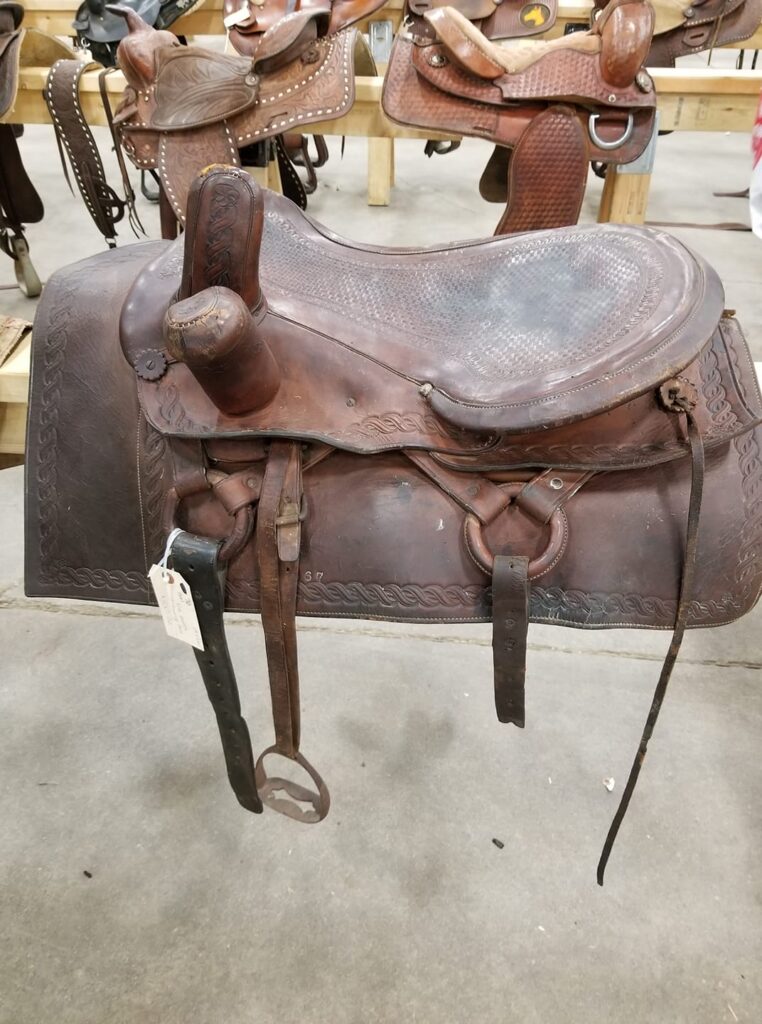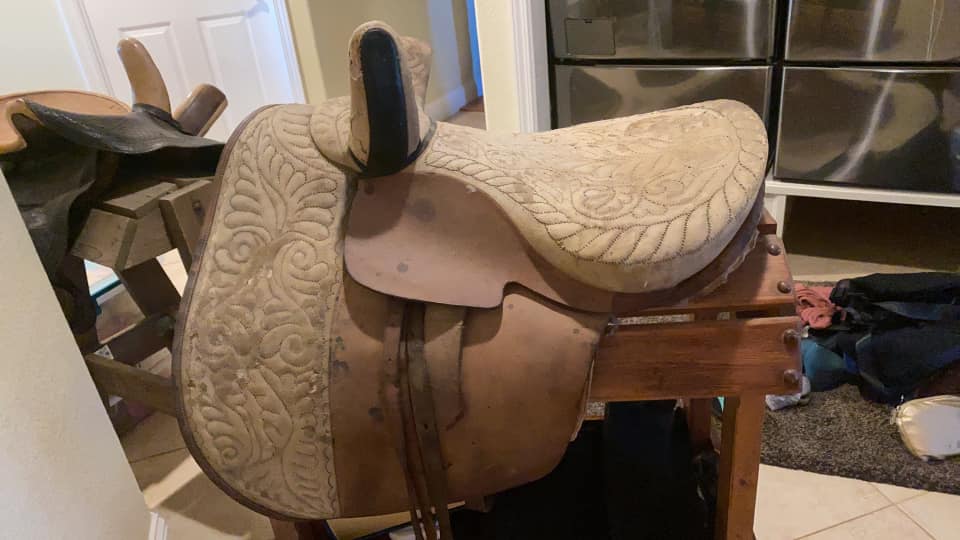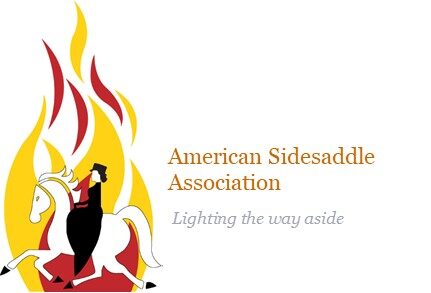


So you want to ride Sidesaddle?
Have you always wanted to try sidesaddle riding? Did you find Grandma’s saddle in the attic? Sidesaddle riding can be a fun experience with some basic how-to’s and safety tips. This guide will cover the most common questions when one is looking to start riding aside.
Question 1: Can my horse be trained to carry a sidesaddle?
Yes! Most horses that are trained well astride (in a regular saddle) adapt to a sidesaddle quite easily, though you will typically want a horse that is over 6 years old for muscular and skeletal stability. Almost any horse, of any breed, can make a suitable sidesaddle horse, however a horse with little to no withers, a very wide build, or a very short back will be harder to fit for a sidesaddle. Which leads us to:
Question 2: How do I fit a sidesaddle?
The safety and enjoyment of sidesaddle riding is all dependent on the fit of the saddle to the horse and to you. An ill-fitting saddle can cause serious back problems for the horse and also cause the saddle to roll, which will give you a very unstable (and unpleasant!) ride. The same good fitting practices you would use for a cross saddle should be used, but with a much higher degree of care taken. While it is best to get help from fellow sidesaddle riders, any experienced saddle fitter can check the fit. Any padding that is used should be kept as thin as possible, as too thick of padding may cause the saddle to roll.
Video on how to measure a sidesaddle for your horse
Video on how to measure a sidesaddle for you
Question 3: What kind of sidesaddle should I use?
Sidesaddles are like snowflakes, no two are alike. However, they do fall into four main categories
A period or catalog saddle; these were made in the thousands and sold mostly between 1890 – 1915, often by Sears and Roebuck, Montgomery Wards, etc., through their shopping catalogs. Individual saddle makers made and sold these saddles as well. We strongly recommend that these saddles are checked by a professional saddler before use, and that preference is given to those with safety features such as a balance strap, leaping head and safety stirrup. They sure can be pretty, though.
Next are the Old English Classics. These are made extremely well with a leather quality that is almost impossible to find in today’s world. The safety features are usually complete and correct.
Harder to find is a correct and true western sidesaddle made of the Goodnight style.
Then, finally there is the category of cheap and badly made modern sidesaddles. These saddles may be made in India, Pakistan, Romania or China, and are found by the dozens on eBay. They are made of poor quality materials and often of a flawed design. These can be unsafe for both horse and rider.
The balance of a sidesaddle is very complex, and a poorly made saddle will not be balanced properly, nor will basic safety features be manufactured correctly. A bad saddle may give your horse a sore back and you may be unable to ride it correctly or safely. If you are looking to buy a sidesaddle, or fit one you already have, please contact an ASA member organization for assistance. Through experience, they can guide you to the properly made saddles, and those to avoid. They can also show you the proper way to put a sidesaddle on the horse and explain all those different straps found on many sidesaddles.
Question 4: How do I mount?
Please have an assistant hold your horse the first time you mount, as mounting a horse in a sidesaddle can be a bit trickier than for an astride saddle. For one thing, the stirrup is much shorter on a sidesaddle and the seat is often higher. Getting on from the ground tends to pull the saddle off center on the horse, and so a mounting block of some sort will become your friend. Most riders will mount as for a cross saddle, then swing their leg over the neck of the horse once up, while ensuring that they are keeping their hips square in the seat. Some very talented and limber riders can get on in one motion without the aid of a groom, but it takes lots of practice! Never hold on to the lower leaping head while mounting, as it can be unsafe and harm the leaping head’s screw threads.
Video on Mounting and Dismounting
Question 5: What is the correct sidesaddle position and posture?
When sitting in the sidesaddle your hips will be square to the horse, as they would astride and your right thigh will be in front of you, if you are on an English saddle. (Note however, that true westerns & Steeles™ are not built for a truly square seat!) Your lower right leg will be resting on your horse’s left shoulder, with your toes level or pointing down.
The left leg is carried in the stirrup, similar to an astride saddle. You should be able to slip your hand between the top of your left thigh and the bottom of leaping head when your stirrup is positioned correctly. NOTE: The leaping head (the lower left pommel) should curve “over” your left thigh. It is not a crutch to rest your leg in.
Your left foot should be light in the stirrup. If you put a lot of weight in your stirrup, it can cause your saddle to tip off to the left while riding. Your hands carry the reins one on either side of your right knee, as best suited to your horse’s head carriage. Your weight is centered through your right thigh, and your hips, back, and shoulders should be square to your horse, as they would be in a cross saddle.
When positioned correctly, the sidesaddle rider, from the back, should look like she is riding astride, though with a missing leg on the right! Sidesaddle riding can and should be even more secure than astride. In an emergency, sidesaddle riders will use what is known as an emergency grip. If you press your right calf against the saddle, and the left thigh up against the leaping head, you will be locked tightly into the saddle, much like a scissor grip. You would be surprised how stable this position can be in an emergency. This is not to be used all the time when riding aside as it may cause muscle fatigue, but it is very useful in those circumstances where you need to secure yourself.
Question 6: How do I ride and how do I cue my horse with no leg on the right?
Your right thigh absorbs the motion of the horse, much like your seat when in a normal saddle. Most new sidesaddle riders unknowingly hunch over and bend to the left. Remember to sit back and keep your right shoulder back. Most horses will move off into a basic walk or trot from a cue with just the left leg or use of your seat. When you start to feel more comfortable in a sidesaddle, you can use a cane or stiff whip to act as your right leg, though some riders find that a cane is one too many things to deal with when starting out. When you get more advanced, you can also use a subtle shifting of your weight as a cue. A shift of the right hip bone for example, can be given for a left canter lead cue.
Question 7: How do I dismount with these pommels in the way?
Dismounting from a sidesaddle is easy. Please have an assistant hold your horse the first time you do this. Start by removing your foot from the stirrup. Then, lift your right leg over both the fixed and leaping heads while turning in the saddle to the left. Now you are sitting sideways on your horse. Put your hand gently on the top of the upper, fixed head and hop down. Be careful not to catch any clothing on the heads as you go! And as with mounting, never hold on to the lower leaping head for dismounting, as this can be both unsafe and potentially damage the screw threads inside the pommel.
Video on Mounting and Dismounting
In Closing:
When everything is fitted correctly, it is a feeling that simply cannot be achieved in a cross saddle. Most horses prefer it to being locked between your legs as in a vice grip and it does add freedom to the rider as well. Also, please do not put your leg over on your astride saddle and ride. It is unsafe and your horse’s back may suffer for it! Sidesaddles are built and balanced differently from astride saddles, and it simply will never put you in the same position as a real sidesaddle. Now, go and talk to your horse about riding aside, then contact ASA for more assistance in fulfilling your sidesaddle dreams.
Adapted from the article by Katey Lunden and Deanne Muller, published in Issue 1 of The Phoenix.
